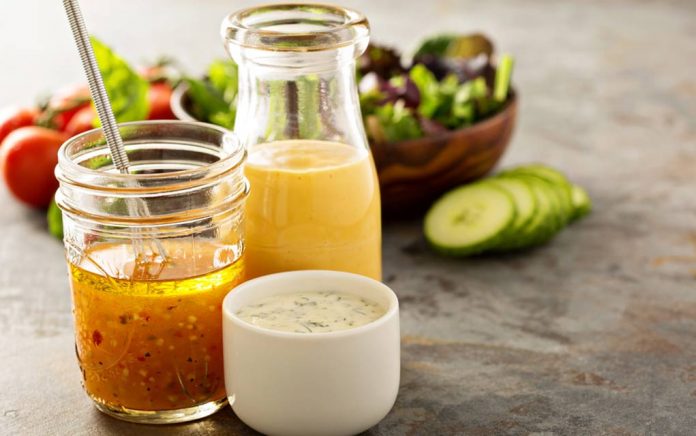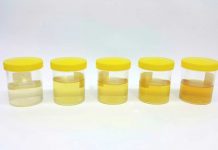
[DID YOU KNOW?] Hidden Risks of Common “Health” Food Uncovered
(AscendHealthy.com) – Cool, crisp greens complimented by cucumbers, tomatoes, carrot shavings and maybe some purple cabbage tendrils for color and flavor can make for a delicious meal. Salads can also be a great option for health. But how we top our salads can turn them from healthy, nourishing dishes to something else entirely. Harmful additives in salad dressings could be putting us at risk.
Salads Are Often a Healthy Choice
For many people, salads are a go-to option for better health because it’s possible to eat a lot of salad without taking in too many calories. Salads are also full of good nutrients. Where most people may make a mistake is in how they dress their salads. Commercial salad dressings often add not only calories but additives that might potentially be harmful to our health. It’s important to know what’s really in store-bought dressings in order to decide what dressing to use, or whether to choose a different option like salsa, apple cider vinegar or lemon juice.
Consider the Additives in Your Salad Dressing
Commonly used additives in salad dressing are things like monosodium glutamate (MSG), disodium guanylate, and disodium inosinate. They’re designed to enhance flavor and often packaged together. Disodium guanylate comes from fish or seaweed, and on its own, it really doesn’t cause a problem for most people.
But when disodium guanylate is combined with disodium inosinate and MSG, it may cause issues for people who have high uric acid, kidney stones or gout. Both of the disodium additives are relatively expensive, so they’re frequently combined with MSG as a way to lower costs. The salad dressing might be less expensive, but the risk of health hazards from the additives could be costly.
The Risks of Gums, Syrups and Preservatives
Gums are used as a stabilizing agent in a lot of foods, including some brands of salad dressing. These come from natural sources like plants, bushes and seaweed. While there haven’t been many studies done about the allergies they may cause, gastrointestinal symptoms and headaches have been reported by some people exposed to these gums.
Corn syrup is also in many store-bought salad dressings because it’s an inexpensive sweetener. But a study from 2010 linked corn syrup to obesity, insulin resistance and an increase in belly fat. Calcium disodium EDTA, another common salad dressing ingredient, is a preservative. It may cause skin rashes and asthma attacks, along with potential damage to the kidneys.
The Bottom Line on Healthy Salad Dressings
There are ways to reduce the chances of getting unhealthy additives in your salad dressing. Dressings labeled as organic typically don’t contain preservatives and other additives. Read labels carefully, because the ingredients in one brand can still be quite different from another brand.
You can also make salad dressings at home, so you know exactly what goes into them and can avoid anything you don’t want to ingest. Oil and vinegar are common at-home salad dressing options, or you might consider making homemade salsa or a lemon juice-based dressing. There are plenty of others to consider depending on your tastes and needs.
Enjoy the tastes of spring and summer even more by choosing organic dressings or making your own. By choosing a healthier dressing option to go with the valuable nutrients and great taste of your salad, you may be getting more benefits and you might be enjoying more of the fresh, crisp tastes your salad has to offer.
~Here’s to Your Healthy Ascension
Copyright 2023, AscendHealthy.com




















